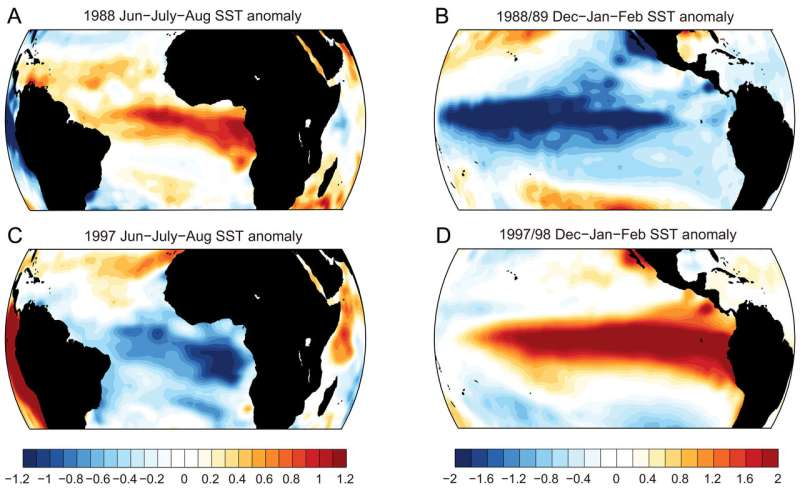August 22, 2019 report
Global warming could make El Niño events less predictable

An international team of researchers has found evidence that suggests that as the planet continues to heat up due to the emission of greenhouse gases, it will become increasingly difficult to forecast El Niño events. In their paper published in the journal Science Advances, the group describes computer simulations that show the impact of global warming on El Niño and La Niña events.
Over the past half-century, scientists have found that cooling events over the Atlantic Ocean can lead to what are described as La Niña events—and that La Niña events can lead to warmer water in the Pacific Ocean the following winter, which have been described as El Niño events. Both types of events have an impact on rainfall amounts in given areas. The connection between the two types of weather events has proved to be predictable. And because of that, weather forecasters have been able to warn areas that might be impacted by more or less rainfall surrounding each type of event. But now, that forecasting ability might be changing, as the researchers with this new effort have found evidence that the link between the two events appears to be fading as the planet gets hotter.
To begin their study, the researchers looked at data describing connections between El Niño and La Niña events over the past several decades. They noted in particular how such connections compared with forecasts given and the actual weather that occurred. The team then created computer simulations that accounted for the warming of the planet. They report that their simulations showed both types of weather events happening more often—but less linkage between them. When run multiple times, the simulations suggested that future El Niño and La Niña events may be connected only approximately half the time, making it impossible to use them as forecasting tools. The researchers suggest that their simulations also showed that it will be increasingly difficult to use either type of event to predict the other in the coming years. And they also showed that it will become more difficult to predict the severity of either event, as well.
More information: Fan Jia et al. Weakening Atlantic Niño–Pacific connection under greenhouse warming, Science Advances (2019). DOI: 10.1126/sciadv.aax4111
Journal information: Science Advances
© 2019 Science X Network



















